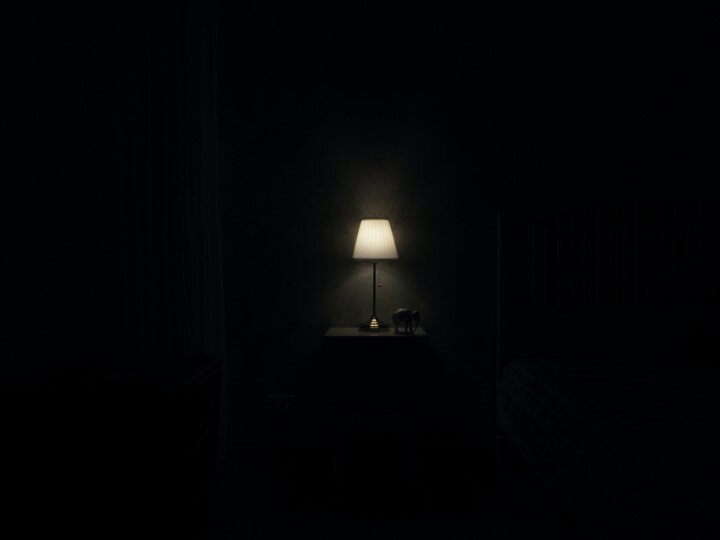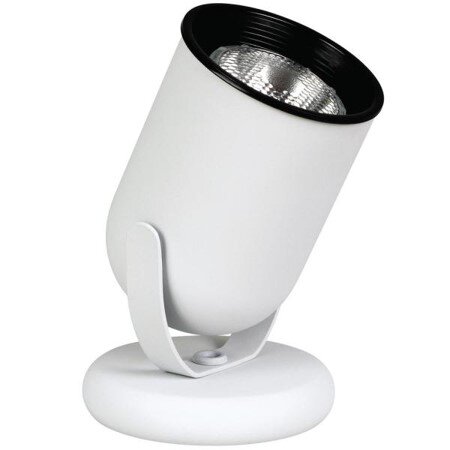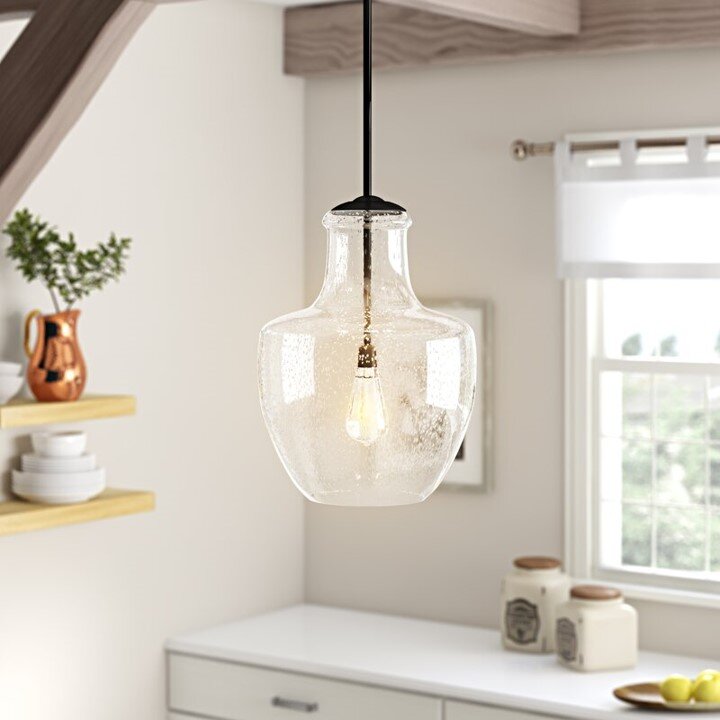Vonluce Home
For a long time great quality and stylish home decor was simply not synonymous with affordable price points. That’s not the case anymore! Vonluce Home has gorgeous home decor for every personality, mood, and taste, within budget.
If you’re starting a renovation from the studs out, meaning you’ve ripped out all the drywall and exposed the ceilings, you have a great opportunity to really dig into a brand new lighting design for your space.
Source:Monica Silvestre, Pexels
Chances are you’re not working on a total gut renovation at the moment, but what if you still need to illuminate your small room?
Nothing makes a room feel more like a cave than a single light source, especially if the room is small.
Source: Dorren, Pexels
It doesn’t matter if it’s a ceiling fixture, floor lamp or table lamp, one light source will highlight shadowy areas and really make the walls feel like they’re closing in.
The solution doesn’t have to involve installing expensive hard wiring.
You can absolutely achieve a fantastic lighting scheme with a simple formula and a few clever tricks so you can enjoy a properly lit room.
Stop straining your eyes trying to read in a dimly lit room.
Source: Thought Catalog, Pexels
Conquer the dark recesses and ceilings with a shot of light.
Make your small room come to life with a proper lighting plan.
Let’s get into: My no fail lighting formula and 11 clever ways to light up a small room!
The No Fail Small Room Lighting Formula
Download Your FREE No Fail Lighting Formula Here
If you want to make your small, dark room feel larger this is the simple formula to follow:
And, truth be told, it will work for large rooms too.
Measure the length and width of your room in feet.
Multiply those two numbers together.
Then take that result and multiply it by 1.5 to get the number of watts needed to adequately light the space.
Last, divide that result by 60 or 40 (that is the average watt for a light bulb).
If you get a fraction, round up to the next whole number.
For example, if you get a 5.4, round up to 6.
That whole number is the number of light sources you will need for your space. Now, you can achieve that optimal lighting in a number of ways.
It can be with a combination of ceiling, floor and table lighting.
It can also be all table lamps or all floor lamps. It’s totally up to you.
The calculation gives you the optimal number of light sources to illuminate your exact size room.
In my opinion, if you’re looking for a cozy, more “homey” lighting scheme, the combination of ceiling, table and floor lighting will get you there.
Design tip: Try to include at least one extra form of ambient lighting in the space to really amp up the cozy factor.
Source: Anastasia Zhenina, Pexels
This would be can lights up lighting a dark corner, candlelight, salt lamps, or low watt accent lighting on a shelf, credenza or end table.
Source: Home Depot
Source: Sat Lamps Etc.
Fixtures like a gas fireplace or electric fireplace can also help you bring in that cozy vibe too.
Source: Wayfair
If you keep this simple calculation in mind, you’ll always have the right amount of lighting in any size room, especially small ones.
Now, how about 12 clever ways to get that all important lighting in spaces that don’t have a lot of floor space or table surfaces?
I would still consider this to be a single light source if you’re using the formula above.
This option can shine a light in many directions.
I like the idea of diffusing the light with frosted globes or shades because it will soften the light instead of bare bulbs which would increase the number of shadows.
Source: Target
2. Pendant Lights with Clear Shades
I love to use pedant lights in kitchens and dining rooms because they’re amazing for task lighting and they’re very stylish.
In small spaces, I’m particular to clear glass shades or maybe a seeded glass shade because they don’t obstruct sight lines.
Source: Wayfair
Source: Wayfair
Keeping your sight lines open in small spaces will absolutely make a space feel larger.
Don’t be afraid to use clear glass pendants in a dining space or living room because the result will be the same: You’ll have a functional light source without closing off the space with a heavy fixture.
3. A Statement Ceiling Fixture
Source: Wayfair
If you prefer a flush mounted fixture instead of a pendant style, try to find one that takes up a fair amount of ceiling space.
Large flush mount fixtures in small spaces can really bring up the drama factor, which is a good thing.
They’re not going to hang down in any sight lines, but they will make a statement and provide a serious amount of lighting.
Design tip: make sure you know the height of our ceilings before installing a large, flush mounted fixture.
If your ceilings are 7’ or lower, a super large fixture will overpower your space.
If you still want to install a large fixture with 7’ ceilings, I’d opt for one that’s similar in color to your ceiling or one that has a fair amount of clear glass or lucite as part of its construction.
Source: Wayfair
4. Wall Sconces
Wall sconces are super on trend and have been for quite some time.
They’re great for adding light to a tight corner that doesn’t have space for a floor lamp or table.
There are many stylish options on the market to suit any type of décor.
Source: Wayfair
Wall sconces in Place of Table Lamps
While we’re on the topic of sconces, they’re also fantastic substitutions for table lamps.
Source: Wayfair
If you don’t have the space on a living room side table or bedroom nightstand; or, if you just don’t want to use a table lamp, sconces will give you functional lighting without sacrificing surface space.
5. Track Lighting
Source: Wayfair
Just like back in the 80’s, track lights are a go to lighting source for a lot of spaces.
They work great to highlight vaulted ceilings, but they also serve as the perfect illumination of flat ceilings of various heights.
They are directional by nature, which means you can position the fixtures to illuminate a dark corner or to provide lighting to highlight a piece of art on the wall or statue in the corner.
Source: Wayfair
I would still consider adding table and floor lamps in conjunction with track lights to enhance the coziness of a small space.
6. Led Recessed Lights
Source: Home Depot
This is one trick I’m using right now in a bathroom renovation.
The space is super dark and small.
It has one light source in the ceiling and I’m going to install single source recessed LED lights in 4 additional spaces on the ceiling.
This is ideal because the additional lights will provide much needed task lighting in strategic areas and they’ll also illuminate the entire room evenly, which will make the space feel larger.
The best part is you can connect up to 100 lights on a single power source.
Holy abundant lighting, Batman!
7. Led Light Strips
Source: Home Depot
This hack is a very inexpensive and effective way to get some ambient lighting in a small room.
You can easily install these led strips behind the profile of ceiling trim.
If you want to be extra discreet, have an electrician install a plug close to the ceiling so you can use a smart plug to control the strip lights with Google Home, Amazon Alexa or your smart phone.
Source: Home Depot
I love to use LED strip lights to light bookshelves, TV cabinets or the back of mirrors or headboards for a little added ambient lighting.
Source: elemental led
I would not consider ambient lighting as a part of the functional room lighting or as a part of the calculation I mentioned above but, ambient lights are a great decorative lighting option.
8. Accent Lights
Fun accent lights on a hall table or credenza add a pop of light and visual interest to a dark or blah corner.
Source: Wayfair
Pieces like salt lamps can provide some ambient light.
Source: Sat Lamps Etc.
If you need a bit more functional lighting with style, these mushroom lights are great for some task lighting and as a bit of drama too.
Source: AliExpress
9. Glass Base Table Lamps
Similar to glass shade pendant lights, clear or semi-clear glass lamps will keep your sight lines open.
Use them on end tables or as bedside tables in a small bedroom.
Even if they’re a larger scale, the fact that you can see through them will keep the space feeling open.
Source: Wayfair
10. White Lamp Shades
There’s a lot to be said for dark lamp shades.
I love the drama a black lamp shade adds to a moody room.
Source: Wayfair
They can add a richness that highlights textures or provides an intimacy for a space.
However, if you’re looking to make a space feel larger, I suggest covering your lamps with light or white lamp shades.
Source: Wayfair
They’ll increase the illumination from your lamp making a small room feel open.
11. Bright White or Daylight Light Bulbs
Source: Home Depot
Another way to increase the light in a space is by using natural or bright white colored bulbs.
You wouldn’t believe the difference this will make to the brightness of your small space!
You’ll find a variety of hues in both LED and incandescent forms at most big box and hardware stores.
There you have it, 12 clever ways to light up a small room and my no fail lighting formula to determine how many lights your room needs.
To sum up:
Save this picture to your phone to keep lighting formula right at hand when you need it.
Save this picture to your phone for reference, Source: Michael Helwig Interiors
And If you’d like to cleverly tackle your small room lighting scheme,
try: Styling your space with skinny floor lamps.
Pick up pendant lights with clear shades.
Try a statement ceiling fixture on for size.
Give wall sconces a whirl.
Install a track lighting system, an old school hack for new spaces.
Embrace the LED trend with recessed ceiling lights and
strip lighting.
You can’t go wrong with accent lights.
Glass base table lamps, no matter the size, will always make a space feel lighter.
Try out a white lamp shade to brighten up a small room.
Switch out your regular bulbs for some bright white or daylight options.
What are some ways you’ve been able to brighten up a small room with lights? Leave me a comment below and tell me all about it.
Join the Fun
If you enjoyed this post and you want to keep seeing my weekly blog, the best way to do that is to subscribe.
You can subscribe by downloading my 11 Secrets Only Designers Know to Make Your Space Rock. If you’re curious about how decorators and designers make a home look magazine ready, you’ll love taking a gander at these 11 secrets. You’ll learn how to style your room from the floor up and it will work for ANY space you have.
I write about small space design and decorating, sustainable furniture options, positive self care and a variety of do-it-yourself home décor.
I’d love to connect with you!
“This man is a plant shaman. He not only designs beautiful rooms, he’s got a green thumb that works like magic! My peace palm never looked better.”
“Michael Helped me to get my home office in magazine ready form. Thank you a million times for helping me figure this room out. It’s now my favorite room!”
Michael is Principal designer and blogger at Michael Helwig Interiors in beautiful Buffalo, New York. Since 2011, he’s a space planning expert, offering online interior e-design services for folks living in small homes, or for those with awkward and tricky layouts. He’s a frequent expert contributor to many National media publications and news outlets on topics related to decorating, interior design, diy projects, and more. Michael happily shares his experience to help folks avoid expensive mistakes and decorating disappointments. You can follow him on Pinterest, Instagram and Facebook @interiorsmh.












































